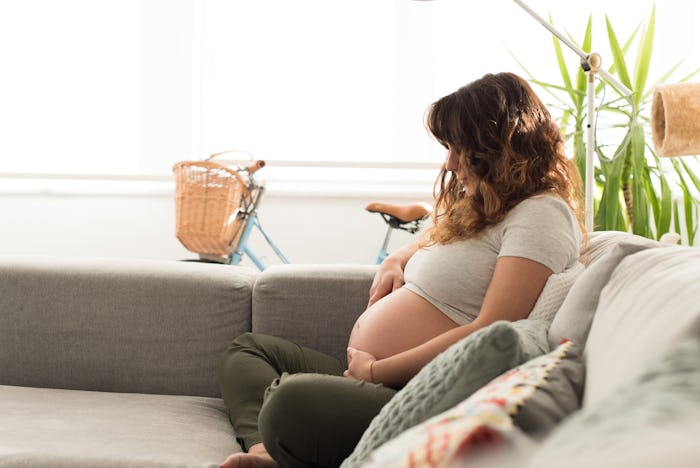Life

6 Differences Between Braxton Hicks Contractions & Real Contractions You Need To Know
I was one of those unlucky moms who started getting Braxton Hicks contractions in the second trimester of my pregnancy that lasted for the duration. It was incredibly annoying. The tightening, firm mass my belly became was not only uncomfortable, it caused me significant anxiety. I was always worried that they'd become more before my baby had a chance to finish developing and growing. It wasn't until my OB-GYN literally held my hand and spoke to me about the differences as I trembled that I calmed down somewhat. It turns out the differences between Braxton Hicks and real contractions can be somewhat subtle and easy to miss.
I don't think I actually believed my obstetrician that I was experiencing false labor until I got to the real deal. There was no mistaking the industrial vice gripped pain that was tightening around my abdomen when I was in labor. According to the Cleveland Clinic, that's pretty standard. While Braxton Hicks can be very uncomfortable, and highly off-putting, they're usually not the fierce angry waves of pain that accompany the real deal. Braxton Hicks are not simply an annoyance, according to the Cleveland Clinic. They can be worrisome if they don't stop, or if they begin to progress into painful, more serious contractions. But if you're still on the fence, here are some other ways to tell if it's a real contraction or just your body practicing.
1Braxton Hicks Are Sporadic
According to the OB-GYN Women's Center of Lakewood Ranch, Braxton Hicks contractions happen at irregular periods. Real contractions are regular, predictable, and come progressively closer and closer together as you near childbirth.
2Braxton Hicks Should Be Infrequent
Braxton Hicks contractions don't just keep coming — it's usually only a few in an hour a few times per day, according to Pregmed. If they come more frequently than that, it's best to call your provider. My OB-GYN's rule for me was any more than four in an hour and I had to call her. Think about all the women sent home from the hospital when their contractions aren't frequent enough. Your doctor totally has an idea in mind of how many contractions mean labor is on the way.
3Braxton Hicks Contractions Are Not As Painful As True Contractions
Let me tell you, the pain of labor is striking. It's almost vulgar how badly it hurts. Dr. Ching-Lynn Chen, board-certified obstetrician from New York City's OB-GYN Westside, told Parents that real labor includes "very painful contractions that come on a very regular basis." I know that my Braxton Hicks were all over the place, sometimes closer together, and some were hours apart.
4Braxton Hicks Can Be Affected By Position Or Activity
I spoke with labor and delivery nurse Cathy McMahon of Boston, Massachusetts and she tells Romper, "A lot of women come in in false labor, and as soon as we get them up and moving, the Braxton Hicks stop. This does not happen in real labor. Often, real labor is sped up and intensified with movement." So if you're feeling it, try switching your position or walking around to see how those contractions react.
5Drinking Water Doesn't Help Real Labor
McMahon says that Braxton Hicks can come about because women aren't drinking enough water. "When moms call the nurse line, the first thing we have them do is drink some water and relax if we think the contractions are Braxton Hicks."
I am terrible about drinking water. I am a tea addict, and switching to the clear and flavorless takes a lot of effort. When I called my OB-GYN with Braxton Hicks, she said "Cat, have you had any water today?" The answer was possibly no.
6Braxton Hicks Won't Cause You To Spring A Leak
Feel like you might possibly be peeing yourself? You're probably leaking amniotic fluid, in which case, labor is likely headed your way. "Any time you see or feel fluid leaking, or bright red blood, you need to be evaluated right away." McMahon says to call your OB-GYN because your baby is soon to appear.